| Article ID | Journal | Published Year | Pages | File Type |
|---|---|---|---|---|
| 3877574 | The Journal of Urology | 2005 | 6 Pages |
ABSTRACTPurposeCancer of the prostate (CAP) is one of the most common malignancies affecting North American men with about 215,000 new cases and 35,800 CAP related deaths annually. The most prevalent intervention for localized CAP is radical prostatectomy (RP) with 10-year survival rates approaching 90%. Studies of men in post-RP recovery indicate that 44% to 75% experience sexual dysfunction and more than 60% experience distress in reaction to sexual dysfunction problems. These findings are increasingly significant as prostate specific antigen testing continues to increase CAP detection rates, resulting in more and younger post-RP patients confronting sexual dysfunction.Materials and MethodsA MEDLINE database search was performed for articles published from 1966 to September 2004.ResultsDespite effectiveness 30% to 50% of patients who turn to sexually assistive aids after RP discontinue use within a year. This suggests that the achievement of physical responsiveness to an aid is necessary but it is not a sufficient factor in long-term sexual adaptation. Current research exploring this gap between effectiveness and ongoing use supports a broader perspective of sexual dysfunction emphasizing several factors, including perceptions of inadequacy, anxieties in regard to performance and depression in each member of the couple, overly enthusiastic expectations, partner physical/emotional readiness to resume active sex, the meaning to the couple of using a sexual aid and the quality of the nonsexual relationship of the couple.ConclusionsOur findings reveal the need to explore broader strategies for improving patient coping ability and adaptation. They also point to the need to explore the role of resumed satisfying sexuality in overall quality of life following treatment.
